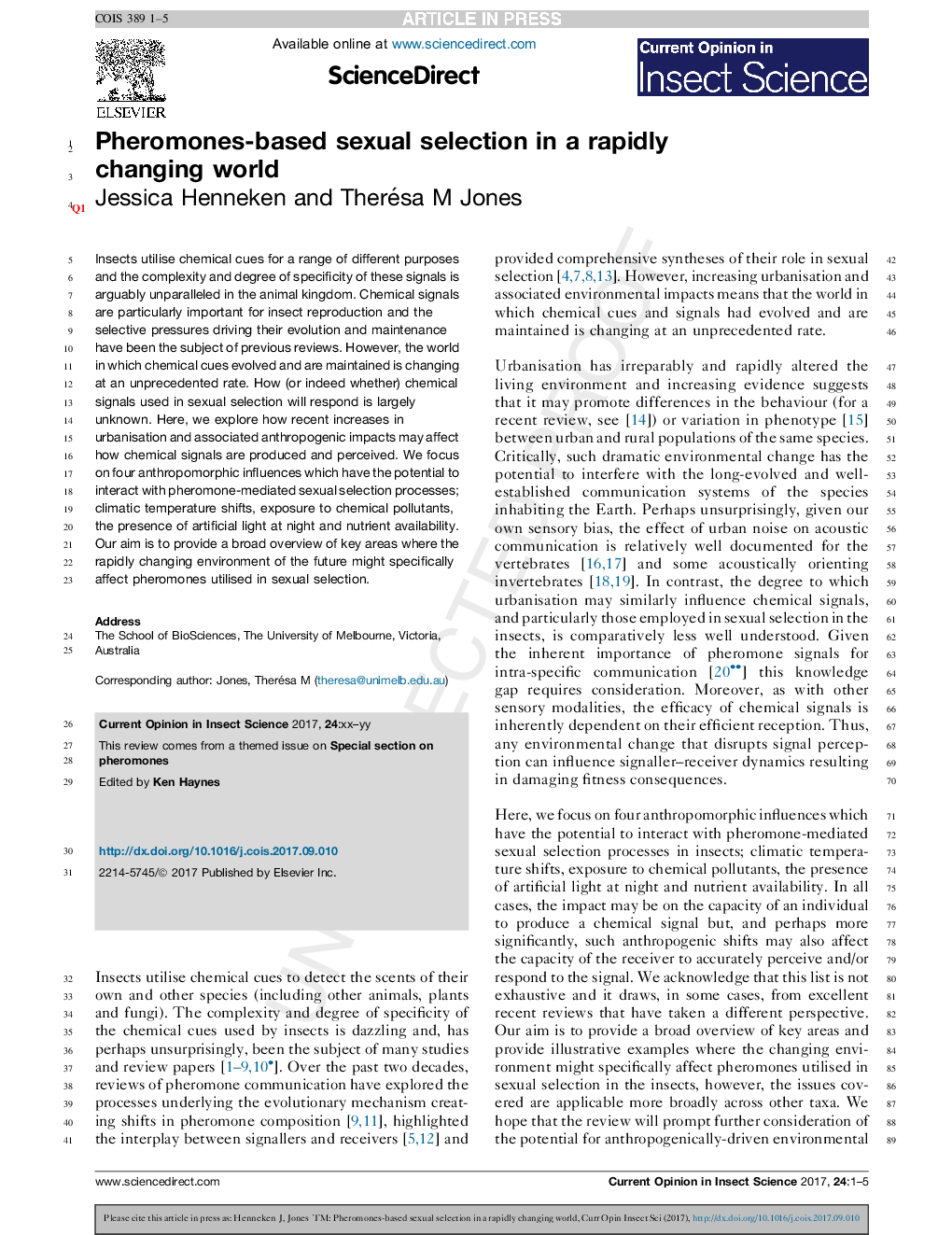| Article ID | Journal | Published Year | Pages | File Type |
|---|---|---|---|---|
| 5761087 | Current Opinion in Insect Science | 2017 | 5 Pages |
Abstract
Insects utilise chemical cues for a range of different purposes and the complexity and degree of specificity of these signals is arguably unparalleled in the animal kingdom. Chemical signals are particularly important for insect reproduction and the selective pressures driving their evolution and maintenance have been the subject of previous reviews. However, the world in which chemical cues evolved and are maintained is changing at an unprecedented rate. How (or indeed whether) chemical signals used in sexual selection will respond is largely unknown. Here, we explore how recent increases in urbanisation and associated anthropogenic impacts may affect how chemical signals are produced and perceived. We focus on four anthropomorphic influences which have the potential to interact with pheromone-mediated sexual selection processes; climatic temperature shifts, exposure to chemical pollutants, the presence of artificial light at night and nutrient availability. Our aim is to provide a broad overview of key areas where the rapidly changing environment of the future might specifically affect pheromones utilised in sexual selection.
Related Topics
Life Sciences
Agricultural and Biological Sciences
Agronomy and Crop Science
Authors
Jessica Henneken, Therésa M Jones,
